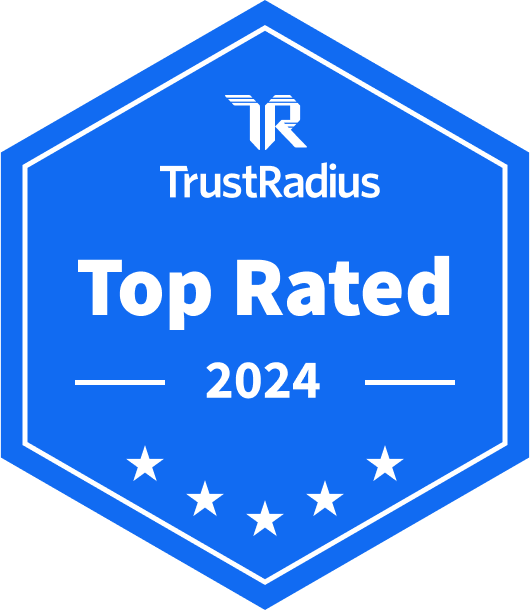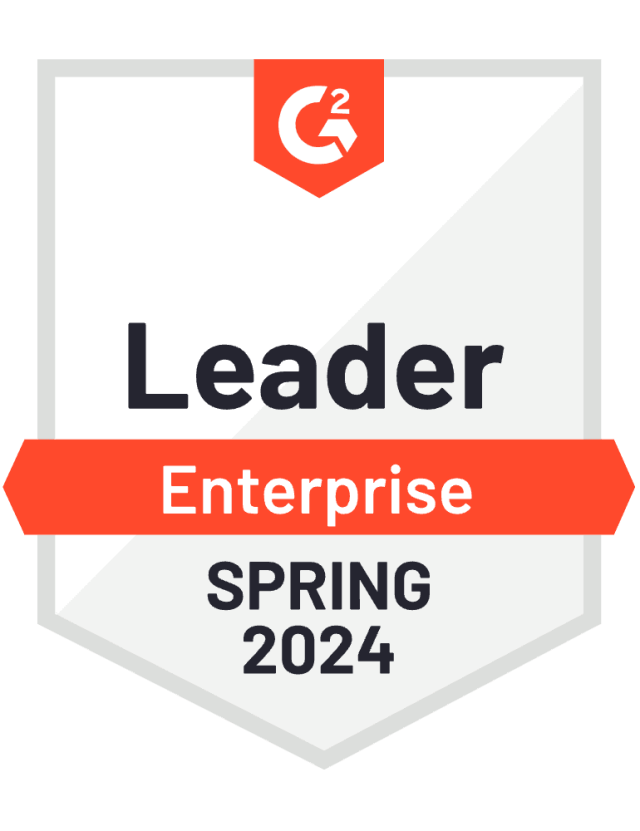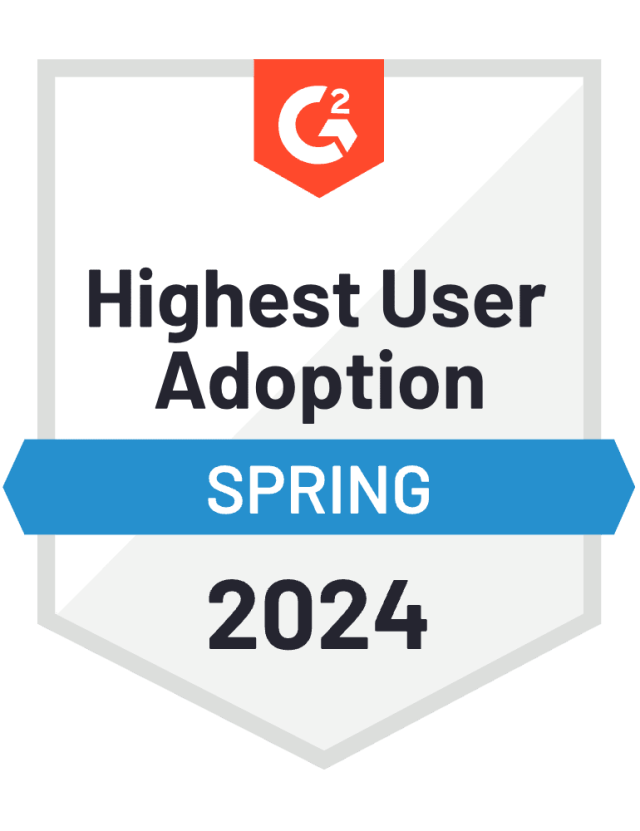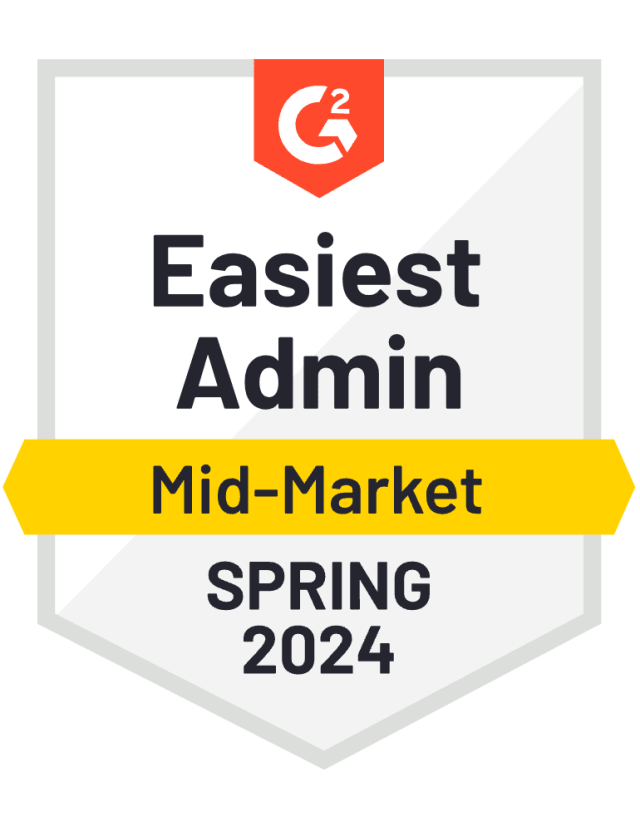Top of Funnel Metrics
Let's start at the top of the funnel. These are the metrics that show you your success in attracting potential customers into your sales funnel. This is where you strive to increase brand awareness, perhaps web traffic, and reach new audiences.
Likes and Shares
Likes and shares are the first thing that comes to mind when you think about engagement metrics. Likes and shares are indeed social media metrics that matter because they’ll give you an immediate sense of how well your content is performing with your audience.
They also have a great organic amplification effect as more and more people see your post - both your audience and your audience’s network, because they see which pages their friends like interacting with, or posts their friends share.
This is a key area to track, so tap into a tool that allows you to track how and where your content is spreading. With Socialbakers platform, you can count all the people who saw a post from a Page as it spreads via friend networks and beyond.
Reach (How Many People in Your Audience Saw a Given Post)
Reach is the total number of people who saw any given post since it went live. It’s an important metric to track if you want to keep tabs on your brand awareness. The higher the reach, the more people know about your brand (theoretically).
Reach is increased by either boosting a post with budget or organically grown by publishing stellar content that makes your audience share it to their networks, comment on it, or give it a like.
Click-Through Rate (No. of Clicks on any Given Post)
Any content you or your affiliates post with links helps direct traffic into your funnel and towards sales. But do you know how much of your audience is clicking through on the content you share?
Keep track of the click-through rate on your content, and content your affiliates post, to not only help you measure the actual success of a given piece, but also to see if the content posted is aligned with your branding and with the interests of the audiences you’re trying to reach.
So, your Click-through rate helps you make robust decisions about future content and helps you further improve your reach and future click-through rate. A custom short URL like Rebrandly can help you to reach this goal. It lets you shorten, brand, and track every link that you create and share for your content. By using branded links you can increase your click-through rate by up to 39%.
In short, this is an important metric you can leverage to optimize the quality, and therefore, results of your content.
Interactions per 1,000 Followers (Likes, Comments or Shares on any Given Post)
Raw engagement numbers are valuable, but to really focus on a post or profile’s engagement, one metric that really matters is the share of an audience that interacts with content vs. the total audience size.
Every audience has a segment of followers that don’t actively engage with content. Getting that segment to interact is one way to increase engagement rate. The other way is to increase engagement amongst fans who already engage at some level.
Interactions per 1,000 followers (interactions per mille) can give you an immediate view of how engaged an audience is. When it comes to influencers it’s an incredibly valuable metric for spotting influencers who can draw an audience to your product, as well identifying those whose audience is apathetic, inactive, or even worse, fake.
A caveat to using interactions per 1,000 followers is that, generally speaking, very large audiences have a lower overall interaction rate - something to take into account when choosing between micro influencers vs. macro influencers for your brand’s next campaign.
It can be helpful to choose a tool that can calculate this metric for you, showing the overall health of a given influencer’s profile.
Looking for the perfect influencer for your next campaign? Try our free tool!
Video Metrics You Should Be Tracking
Video is popular. 54% of consumers want to see video content from a brand or business they support. But which metrics should you track so you can keep your video performance high and get a juicy ROI.
Average View Duration (Total Watch Time Divided by Total Amount of Views)
Measuring Average View Duration of a video is vital. If viewers can't make it through to the end, either the content isn't compelling, the video is too long, the soundtrack is abrasive or perhaps the targeting is off. Or maybe the video just doesn't deliver what it promised. The reason why audience members aren't compelled to watch the entire video can be identified through A/B testing, but the first sign that's something is wrong is that your audience isn't making it very far into your video.
Average Completion Rate (Average % of Total Video Length That Viewers Watched)
Another metric which informs you how engaged viewers are with your video. if they are watching until the end then you can be fairly sure that you're making a good connection, bringing them value, and entertaining them. It's also important to note that facebook ranks videos in audiences' newsfeeds based on Average Completion Rate.
Audience Retention (% of Your Audience That Watched the Whole Video From Start to End)
Pay close attention to this metric. You'll be able to see at which points your audience drops off and stops watching your video. This will give insights into where your video stops being compelling, so you can take this information and use it to do better on the next video, perhaps making it shorter, or more compelling with smoother transitions.
Many brands are very successful with video ads. However, it's important to pay attention to key metrics when you're using paid social media advertising. Successful paid video ads can bring a very high ROI but if you don't pay close attention to what the metrics are telling you, you be wandering in the dark.
Let's look at which paid social media metrics are essential to track if you want to get transparency into your paid ads and make sure you don't waste budget.
Key Paid Social Media Metrics
Paid social media is now essential to any brand wishing to scale up their operations. Done right, it can be a game changer, but done badly, it can cost companies millions in wasted budget. Below, we've listed the metrics that will keep your brand, and your paid advertising, in good shape.
Cost-per-Click (CPC: The Cost of Each Click on a Paid Post)
Cost-per-Click is crucial to understanding how to make more impact with your advertising, and increasing your ads' Click-through rate and ROI. Cost-per-Click is one of the metrics in social media marketing that many will already know. This is the average spend required to generate one click from your audience on paid content.
As you can see in the graph below, Cost-per-Click is not set in stone as different audiences, regions, verticals, demographics and keywords will cost an advertiser varying amounts depending on how competitive each is.
A campaign manager may set a budget, but how quickly that budget is eaten up by audiences clicking the ad depends on how well placed it is, and how well researched the keywords are.
Reducing CPC while increasing Click-through rate is often a core focus for ads teams, to boost overall ROI. So how do you figure out what the real cost of your advertising is going to be?
For a more accurate estimation of what your budget will have to be, don’t just look into the purchase value of your product or keywords you’re targeting themselves. Instead calculate the lifetime value of a customer (LVC).
Making this calculation now will allow you to bid accurately and optimize better, which will result in much higher ROI than if you only plan in the short term.
CPC itself is not the whole story, but it’s a good basis for you to determine how well your paid content is performing.
It should be noted though, that when you’re dealing with paid content it may take some time for an ad to settle in. At first you may see a spike of higher costs. But don’t panic, if your targeting is on point you should see the costs drop down and even out as the algorithm begins to serve your ad to more relevant audiences.
Cost-per-Action (The Cost of any Specific Audience Action Taken on a Post)
Cost-per-Action will show you the cost of any specific action related to a promoted post or story. Actions here can be likes, comments, etc. Improving your content and targeting will help increase the engagement on your paid social campaigns and bring down these costs.
On the web, CPA is crucial for understanding customer behavior when it comes to conversions.
Anything from site visits to a specific landing page visit, an abandoned cart event, or even a thank you page after purchase, are all examples of different conversions.
Each of these, however, will have a different value to your business, and the more accurately you can define that value, the more accurately you can understand the cost involved in acquiring it, and by extension, how you spend and invest.
Your Costs-per-Action can be calculated as budget spend for a given post divided by the number of actions taken via that post.
Likes, Comments, and Shares on Paid Content (Aggregated Number of any Interaction)
One of the paid social media metrics that is truly vital is paid content engagement. It’s important here to note that we do not mean likes, comments and shares you have paid for, but on paid promoted posts.
Buying likes for posts may make your content look flashy compared to bigger competitors, but it actively damages your ROI and the business value of your content because your ratio of engagement to audience actions that bring value (like clicking links to your website or making a purchase) will be skewed.
Genuine engagement on your paid content, on the other hand, points to well-targeted content that attracts and engages your audience. The specific metrics that matter to you will vary depending on what exactly your campaign is trying to achieve.
Track and compare Engagement-per-post to see what sparks audience interest, what images they like, and what incentivizes them to share your content to their own audiences.
Benchmarking – Bigger Picture Insights
Tracking your ad performance by itself is valuable, but your efforts to win customers on social media don’t exist in a vacuum: you have competitors who want that top spot just as much as you do. It’s important to understand not only your costs and ad results, but theirs as well, along with your industry’s.
Consider new competitors entering the market too, as well as holidays specific to the region(s) you are targeting. For instance, advertising in the Middle East during the holy month of Ramadan brings with it a unique set of challenges to tackle.
This is where benchmarking comes in, and where it reveals itself as a social media metric that really matters.
With ads benchmarks, you can put your ad performance into context within your industry, region and more. an incredibly valuable tool for understanding just how successful your efforts are and whether your performance is a result of your work or influences outside of your control.
Your ad spend might be increasing, but with ads benchmarking you might see that your competitors’ spend is also increasing at a similar pace, suggesting a larger shift in the market.
Similarly, you’ll be able to benchmark and track important engagement metrics against your competition and industry, including:
Paid social media strategy and budget allocation
Most engaging post types
Maximum vs. average interactions
User activity throughout the week
Distribution of interactions showing if content is receiving more likes, comments, or shares
Quality ads benchmarking makes reporting your performance extremely accurate and it’s easier to make more informed budgetary decisions on future strategy.
Want to see how you are performing on social media compared to the competition? Find out now, for free.
Organic vs. Paid as a Comparative Metric
When it comes to content strategy, it’s not paid vs. organic, but rather a combination approach which will generally net you the greatest results. As far as social media marketing performance metrics are concerned, you’ll be tracking the performance of your organic content as well as your paid successes: your ads, promoted posts, promoted stories, etc.
But for a full picture of your investment, both in terms of time and money, be sure to compare the results of each to see what is performing well and where you can make changes to improve your ROI.
It’s incredibly valuable to compare your organic and paid results all together in one place. Because unconnected data only shows a partial or fragmented picture, so you’ll want to analyze unified channel data, so you can make future paid strategy decisions with total confidence.
Give it a try today with Socialbakers Suite
Audience Metrics That Matter
Audience Growth and Rate of Growth (No. of New Fans/Total Audience x 100)
First off, it's always good to remember that everything begins with your audience. But when you’re looking at the size of your audience, it’s important to keep in mind that the size (no. of followers) by itself is a vanity metric.
The raw audience number your page or profile has won’t net you engagement, it doesn’t give you actionable insights into your audience, and doesn’t account for the fact that some of the accounts following you may be inactive, or bots. So, audience size is just a figure.
Instead, you should look at the growth rate and net growth of your audience, because this is a better measurement of how well the content you are producing resonates with your intended audience. A strong growth rate can show that your content is well-designed, personalized, on-target, and gaining the engagement it needs to spread.
An easy way to do this is simply to track your follower counts month-to-month and calculate the rate-of-growth against the previous month’s numbers. You can dive deeper with analytics tools to find out how many followers you lost in the same period to see what your net growth looks like, allowing you to determine how the profile you’re tracking is faring in terms of retention.
Combine tracking audience growth with our next metric to make sure your content is performing well in key markets.
Always remember: everything begins with your audience.
Audience Demographics to Form Closer Relationships (Gender/Age/Location/Channel)
Demographics might seem like a basic metric, but the information you can glean from a simple demographics breakdown can be a gamechanger to your business, and makes this a social media metric that really matters.
A social media account’s followers will be from a whole range of backgrounds, ages, locations, and more. Figuring out who really likes your content and engages with it the most is absolutely crucial to fine tuning the strategy behind what you’re posting.
To do that, you’ll want to break your audience down into actionable personas to even better reach customers and potential customers who would love your content. Our current age of marketing is defined by detail. Catering to a specific subset of people for whom your product is highly valuable will bring more success than blanket advertisements to a larger audience with little interest.
So the more granular you get with your audience the better: dig deep and maximize each demographic measurement for your individual marketing personas for its potential to your business.
Data like gender and age might influence the kind of tone and content you post to keep up with specific or localized trends.
Demographics like location can help you make your content more relevant to viewers, while language might be the make-or-break factor in whether your content is even understood by your audience.
Why not give our free Audience Persona Template a shot? We’ve even got you covered with a handy persona template guide explaining exactly how to use it.
Or let AI do the work for you with Socialbakers Suite!
Fan/Follower Activity (Activity Level)
As mentioned above, raw follower counts are often termed a vanity metric. But another way to gather actionable data is to keep track of your fans and followers is by tracking how active your audience is. Not all followers are made equal, and the ones that will bring real value to your page are those who are active and engaging with your content.
So keep an eye on who among your audience jumps into the comments section or shares your posts, and when. Cultivating return engagement will help you develop not just an enthusiastic audience, but even potential brand ambassadors you may want to work with further down the road.
You can use this information in a couple of different ways:
Track when your audience is most active to help pinpoint the times you should be posting on social media to drive maximum engagement
Keep track of who among your audience is engaging with your content the most to help you make decisions that will improve how your content resonates with your audience.
Interests and Affinities
Not the most conventional of metrics, but your audience’s interests are key to the success of any marketing campaigns you may run to reach them. Once you know the demographics of your audience, turn to your audience’s interests and affinities.
Staying up-to-date on popular trends is important, but it’s even more important to really understand what your specific audience is interested in. They probably love kittens (who doesn’t?) but are they interested in the newest coffee-making methods? Do they get fired up over political discussion?
Maybe they want to give their opinion on the latest cosmetics line from their favorite influencer. These are details you’re able to use to spark engagement on your own page with the right content.
Affinities are the pages that your followers also follow, the brands they love, and the kinds of content your audience engages with on other pages. Tracking this information will allow you to build, maintain, or update a content strategy that resonates with your audience.
Many native and free tool options will give you an incomplete view, but manually researching your audiences’ interests and affinities can be painstaking and time-consuming - especially with larger social media profiles with tens or hundreds of thousands of followers.
Linking your data into a comprehensive social media marketing tool like Socialbakers Suite is a great way to make researching your audience’s interests and affinities effortless and immediate.
But hey, giving your audience what they want is only half the job. You should be placing high importance on the service you provide to your audience too. Eighty-six percent of consumers are willing to pay more for a great customer experience. In fact, by the year 2020, customer experience will overtake price and product as the key brand differentiator. That's why the next set of essential metrics we'll look at are all about your community management.
Community Management Metrics
Customer care is paramount to building trust and goodwill between your business and your audience, so it's imperative you keep a close eye on your community management metrics.
The metrics that a community manager should be tracking are a bit different from traditional marketing metrics, but they’re every bit as key. In fact, these metrics can open up fresh insights and data points about your audience you didn’t even know you had.
But rather than separating each of the community management metrics, it’s good to look at how they work together.
We’ve already covered follower growth, and fan/follower activity - but three social media metrics that matter to a community manager as a direct point of customer interaction are:
Average response time - the average time it takes to respond to a message from the moment you receive it
Average resolution time - the average time it takes to resolve an issue from the moment you receive it
Response rate - a % indicating how many messages you answered out of the total received messages
Functioning together, these areas can help your business avoid social media crises, but just as importantly, they will help you foster important relationships and trust with your audience.
At the frontlines of customer interaction, community managers have access to information that might otherwise be unavailable to a business and are able to create and curate a personable digital presence for your business.
For our full guide on social media community management, check out the article here: 8 Killer Tips for Better Social Media Community Management.
Sentiment Analysis (How Good Your Brand/Audience Relationship Is)
Once you have a campaign up and running, keep an eye on how it is performing. Engagement on an influencer’s posts is a good thing to track, but another is the sentiment around the content.
This is an important social media metric in influencer marketing that you should monitor, because with close attention you can nurture positive sentiment and avoid potentially damaging turns towards the negative.
In Socialbakers Suite, you can label sentiment on posts yourself, or let AI do the heavy lifting for you with automated sentiment analysis.
Bottom of the Funnel Metrics
Bottom of the funnel metrics help you when you’re dealing with prospects who are in the decision-making stage. You've increased brand awareness, nurtured your audience with personalized content, analyzed sentiment, hit your paid ad KPIs, and driven traffic to your landing pages.
So what's next? Some harder evidence that all your marketing machinations are having a concrete effect and creating potential customers.
What we’re looking for here at the bottom of the sales funnel are signs that show us a prospect is almost ready to make a purchase.
Common metrics include:
Number of qualified leads
Number of demo requests
Number of registrations for free product trials
Free offers
Discount sign-ups
Optimizing your funnel means that while you attracting and nurture leads at the top of the funnel, the sales team will be working on prospects at the bottom of the funnel.
So, you’ll want to be paying close attention to the quality of leads that Marketing provides to Sales because it informs your activities at the top of the funnel.
If you are not providing enough qualified leads you need to look at why you’re not attracting the right prospects with your content marketing and paid social media advertising.
Maybe your ads targeting is not quite right or maybe your content isn’t focusing on the right advantages and benefits.If your content and targeting are on point, you should be attracting the right kind of prospects and they should be interested in getting a first taste of your product or service.
That would generally be getting a demo of the product or signing up for a free trial - and that’s why it’s important to keep an eye on both volume and quality at the bottom of the funnel.
In this way, Sales can share insights with Marketing, so Marketing can tighten up strategy and mid-funnel nurturing in order to deliver more qualified leads.
A simple way to reduce friction in your funnel is to make it as easy as possible it for leads show and pursue their interest. The smoother the path to conversion, the more leads will flow through the funnel.
Always be looking at where you can tighten up your conversion-points, reduce friction and let prospects flow easily and naturally right to the bottom.
Metrics for Instagram Stories
Because Instagram Stories is becoming more and more impactful, let’s look at some of the common metrics that indicate how successful your Stories content is.
Stories truly is a rising phenomenon. Already, 1 in 4 Millennials and Gen Z-ers look for Stories of the products and services they want to buy. There are 500M daily users of Stories. This is a format you do not want to ignore.
Stories don’t have likes, comments, and saves as Instagram posts do. Instead, they offer their own set of ways to interact.
Reach and Impressions (The Number of Audience Members who Saw Your Post/The Number of Times Your Post Was Viewed)
Reach is the number of actual people who have seen your Story. Don't confuse it with Impressions which is the number of times your story has been viewed.
So if you posted a story and reached one person who viewed your story seven times, Insights would show one reach and seven impressions.
These two metrics help you gauge the size and activity of your Stories audience. If you see a drop in reach, take a look at your posting frequency. A/B test until you find the the optimal frequency.
If you see a drop in Impressions, check the quality of your content: make them more interactive, improve production, and make them as entertaining as you can.
Taps Forward (The Number of Times a Viewer Tapped Their Screen to Go to the Next Story)
This is a good metric to track because it indicates that your story did not hold the viewer’s attention until the end. Look at your content and decide whether it’s properly personalized to your audience, or too long.
Taps Backward (The Number of Times a Viewer Tapped Their Screen to Rewatch the Previous Story)
This key metrics shows you that the viewer liked your Story so juch that they wanted to rewatch it. This is an excellent indicator that your content is hitting the mark.
Exits/Swipe Away (The Number of Times a Viewer Swipes Away to Stop Watching Stories)
This metric shows you if a viewer exited your video before it finished or watched to the end. They may have gone back to the feed or they have closed Instagram. Point is: they didn't watch your Story to the end. And that's bad. Check your content, storyline, topic, etc., to find out why it isn't engaging your audience enough.
The Takeaway
With so many metrics in social media marketing, it can be difficult to select the ones that will help you the most.
Tracking the social media metrics that matter is how to turn basic reporting into something that is integral to driving your strategy forward successfully as you gain a better view of how your current efforts are paying off and where you can improve to boost your ROI.
Focus on actionable social media marketing performance metrics - ones that aren’t just informational, but also offer you a view of how your audience is really receiving and engaging with your content.
Doing all this manually - monthly, weekly, daily, hourly - is a huge task though; one that you can and will sink all your time into unless you have the right tools for the job.
There are plenty of tools out there to help you do this, including native analytics tools. To dive deeper though, and make managing your social media marketing metrics effortless, you’ll want to bring all your data and efforts under one roof with a full spectrum marketing tool.
Want to see how Socialbakers can help you do it? Just get in touch for a free demo - it’s that easy!
Editor's Note: This article was originally published on socialbakers.com. Any statistics or statements included in this article were current at the time of original publication.

















